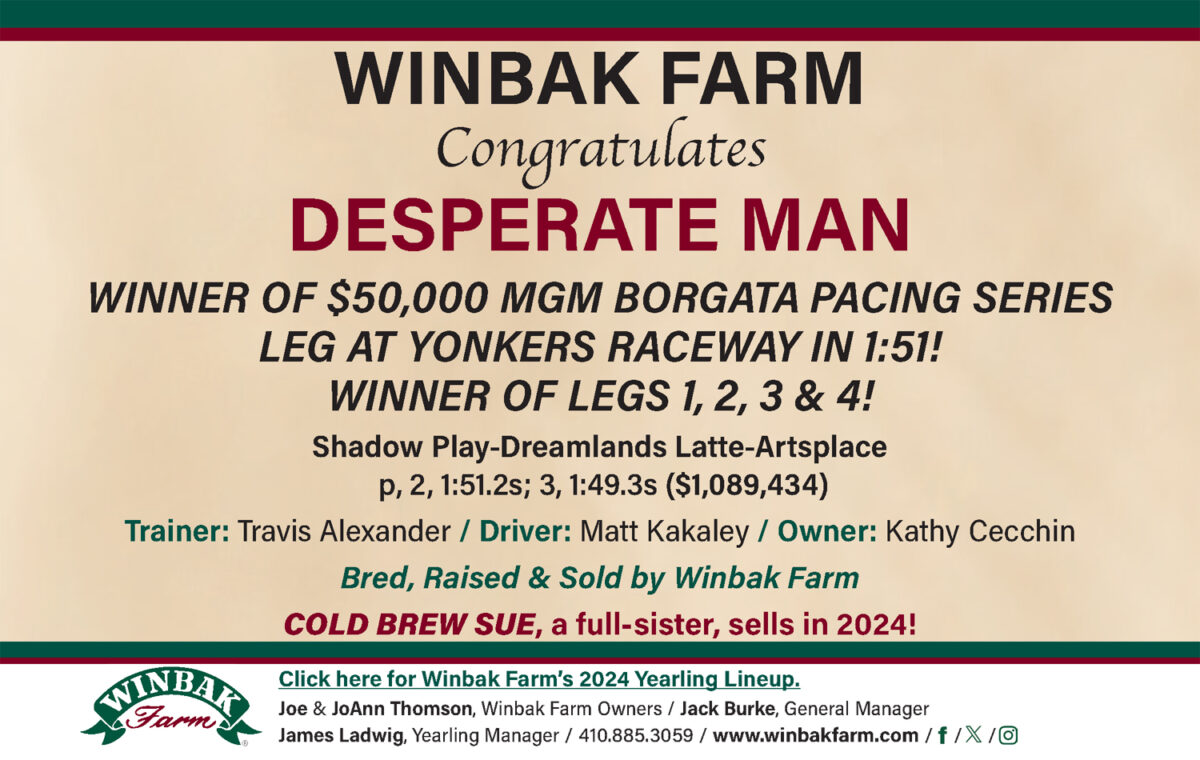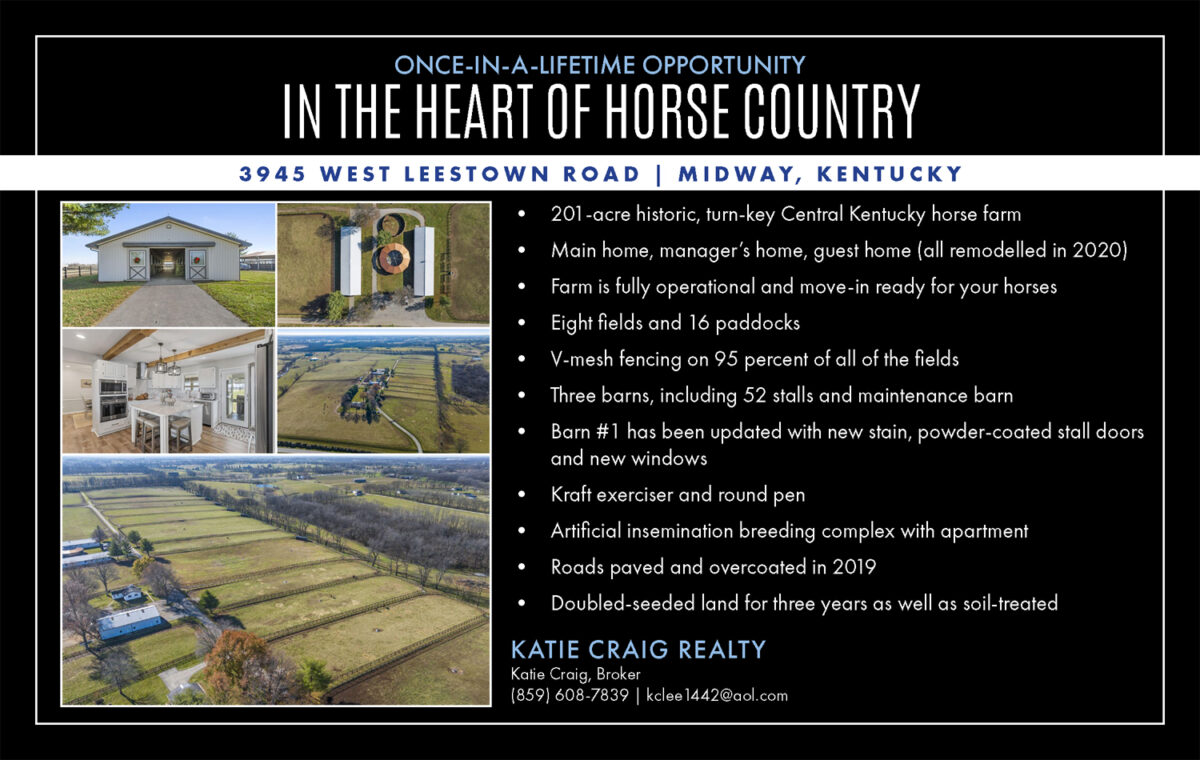

Who is the GOAT?
Recently, I read a thread on Facebook in which a harness devotee referred to Always B Miki as simply GOAT.
I fully understand that the acronym means “Greatest Of All Time,” but I think GOAT is a most unfortunate and unflattering way to refer to an outstanding horse.
And I’m not sure it’s true, either.
If Always B Miki isn’t harness racing’s GOAT, then who is?
I’m not sure. We all have our own opinions, and I’m always open to a long conversation on the very subject, providing that someone else is buying the drinks.
One thing is obvious: Always B Miki is indeed surely the FOAT (fastest of all time). I was among those who cheered his 1:46 win at Red Mile. To show you how far we’ve come in a little more than a century, Dan Patch’s fastest winning time was 2:03-3/4.
But it takes more than a fast mark to establish greatness. I also watched at Red Mile in 1971 when Steady Star paced a 1:52 mile in a time trial for Joe O’Brien. That lowered Bret Hanover’s speed standard by an amazing 1-and-3/5 seconds.
But Bret Hanover truly was a great horse while no one ever said that about Steady Star. Fast? Yes. Great racehorse? No.
So how exactly do we determine greatness in horse racing?
Elizabeth “Weed” Rorty wrote an essay in The Horseman & Fair World on this subject in the early 1960s and noted that the adjective “great” is tossed around far too liberally in horse racing.
Great race. Great colt. Great mare. Great driver. Great sire. Can’t we open a thesaurus and find some other adjectives?
As I recall, Ms. Rorty touched on this subject while singing the praises of Bye Bye Byrd, then newly-retired as the richest standardbred in history. But how many people today think of Bye Bye Byrd as great? (How many think of him at all?)
She felt that he earned that accolade on the track, particularly as an older horse as he battled season after season in the free-for-all ranks, primarily on the twice-around at Roosevelt and Yonkers. He didn’t win every race, but that’s not to be expected when your playmates are Adios Butler, Widower Creed, and the likes. But old Triple B was always a threat and always fought right to the wire.
But Always B Miki paced more than 10 seconds faster than Bye Bye Byrd.
So we can’t use time alone to judge greatness. Neither can we use earnings. Bye Bye Byrd’s $554,257 when he retired made him the richest ever. He won 50 of 101 starts.
I like to look at sustained excellence over several seasons. One simple way is to look at those named Horse of the Year more than once. It’s a list of just 10 horses in the last six decades: Good Time, Scott Frost, Adios Butler, Bret Hanover, Nevele Pride, Albatross, Niatross, Cam Fella, Mack Lobell, and Moni Maker.
This eliminates horses that had one spectacular season, although there are still many sensational horses in that category. Bret Hanover and Nevele Pride deserve special status because they were named Horse of the Year in each of the three seasons they raced. That’s true greatness.
A horse cannot achieve true greatness without sustained excellence. Bret won 62 of 68 career starts while Nevele Pride won 57 of his 67 starts.
(I always find it amazing that Delmonica Hanover was voted Horse of the Year in 1974 after winning only five of her 17 races. But the official USTA stats did not reflect that she also won the Prix d’Amerique in Paris, the most grueling trot in the world, early in that season.)
Some feel that Dan Patch still reigns as the GOAT because of his legendary status in harness history. He truly was a freak and well ahead of his time. But even historian John Hervey referred to Dan Patch as “one of the greatest” when the horse died in 1916. That was the same year that Directum I lowered Dan Patch’s 1:58 as the fastest mile ever in the open. (Dan’s exhibition miles — including his official record of 1:55-1/4 — were paced behind a thoroughbred whose sulky was equipped with a windshield, which allowed Dan to pace several seconds faster than he could without a horse directly in front of him.)
For my money, I would say that Niatross is the GOAT. He simply did everything right. He raced two seasons — 39 starts — over all size tracks. Good post positions and bad posts positions. All he did is destroy his opposition. And made it look easy.
When he was asked for the ultimate effort in his epic time trial, Niatross lowered the world record by 2-and-4/5 seconds. Such things simply don’t happen. New champions usually chip away at the old record, taking off a tick or two. (Always B Miki lowered the speed record by a tick).
Fourteen years after Bret Hanover did the seemingly impossible and paced in 1:53.3, Niatross paced four-and-two-fifths seconds faster. Always B Miki paced three-and-one-fifth seconds faster than Niatross, but there was an interval of 36 years between them.
It’s highly likely that Always B Miki will be voted Horse of the Year. And who can argue with that (except maybe the many and fervently loyal fans of Wiggle It Jiggleit)?
It must be noted, however, that Always B Miki has raced three previous seasons and not been voted divisional champ.
Is Always B Miki the greatest of 2016? Probably yes. (In the interest of full disclosure, I should point out that I told all who would listen in 2016 that there was “no way in hell” that Donald Trump would get the GOP nomination or win in November. So I’m not doing well in the forecasting game this year).
So if Always B Miki is not the GOAT, then who is?
Pull up a chair and we can discuss. But you’re buying the drinks.















